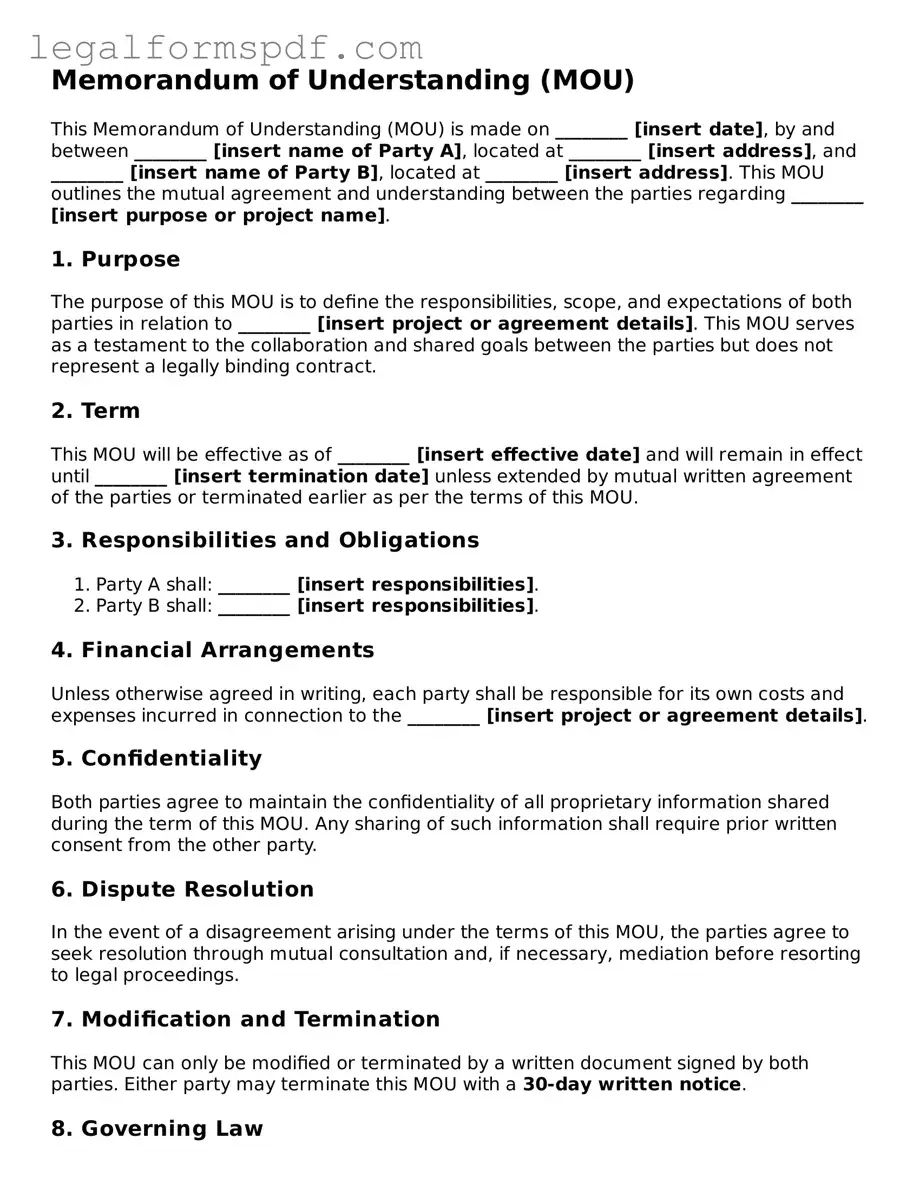What is a Memorandum of Understanding (MOU), and how does it differ from a contract?
An MOU is a document that outlines a mutual agreement between two or more parties on a shared goal or project. Unlike a contract, which is legally binding and enforceable in a court of law, an MOU is generally not legally enforceable but serves as a formal agreement that indicates the willing cooperation and understanding between the parties. Its primary purpose is to ensure that all parties have a mutual understanding of the expectations and responsibilities involved.
When should you use an MOU?
An MOU is most useful at the beginning stages of a partnership or collaboration. It is particularly beneficial when parties want to outline their intentions and commitments towards a project or agreement without the legal obligations of a contract. Organizations often use MOUs in collaborative projects, joint ventures, or when agreeing on joint objectives and how they plan to achieve them together.
What are the key components of an MOU?
While the specific contents of an MOU may vary depending on the agreement, most MOUs include the following key components: parties' names and contact information, the purpose of the agreement, detailed descriptions of the responsibilities of each party, terms and conditions, duration of the agreement, and signatures of the parties involved. Clauses related to confidentiality, dispute resolution, and termination may also be included to provide clear guidance on handling sensitive information, disagreements, and the conclusion of the agreement.
Is an MOU legally binding?
Typically, an MOU is not legally binding in the way that contracts are. However, if the document contains elements that fulfill the legal requirements of a contract, such as offer, acceptance, intention, and consideration, it might create legally enforceable obligations. Therefore, discretion is advised when drafting an MOU to ensure it reflects the intended legal standing of the agreement.
How does one enforce an MOU?
Given that MOUs are not usually legally binding, their enforcement primarily relies on the mutual respect and cooperation between the parties involved, rather than legal action. However, should the MOU contain clauses that are legally binding, those specific clauses can be enforced through legal action, much like a traditional contract. It's crucial for parties to adhere to their agreed-upon responsibilities to maintain a good working relationship and avoid potential disputes.
Can an MOU be terminated?
Yes, an MOU can be terminated, but the process depends largely on the termination provisions outlined within the MOU itself. These provisions may specify conditions under which the MOU can be ended, along with any necessary procedures such as written notice to the other parties by a certain deadline. If no specific termination clause is included, parties may still terminate the agreement by mutual consent.
What happens if one party doesn't follow through with the MOU?
If a party does not adhere to the terms outlined in the MOU, the primary recourse is seeking a resolution through discussion and negotiation, considering the document's usually non-binding nature. If the MOU contains any legally binding clauses that are not being followed, the affected party might pursue legal action to enforce those specific terms. Maintaining open and effective communication channels between parties is essential for the successful implementation of an MOU.
Should an MOU be notarized or witnessed?
While notarization or witnessing is not a typical requirement for an MOU to be considered valid, taking these steps can add a level of formality and seriousness to the agreement. It may also be beneficial in the rare case that a dispute regarding the authenticity of the document arises. However, the decision to notarize or have witnesses should be based on the preferences of the parties involved and the specific circumstances of the agreement.
